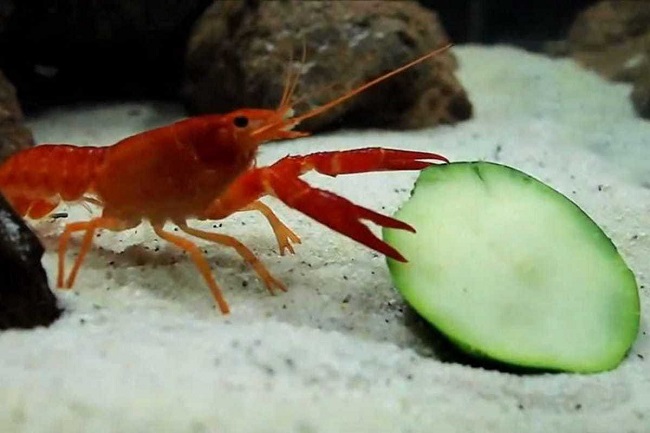Crayfish, also known as crawfish, crawdads, or mudbugs, are freshwater crustaceans that add a touch of excitement to any aquatic environment.
To keep your crayfish healthy and thriving, it’s essential to understand their dietary needs. This article provides an in-depth look into what crayfish eat, their feeding habits, and how you can cater to their dietary needs.

Natural Diet of Crayfish
In the wild, crayfish are opportunistic omnivores, meaning they’ll eat pretty much anything they come across. They contribute to the healthy functioning of aquatic ecosystems by breaking down organic material, acting as nature’s cleanup crew. Their diet includes:
Read Also:
Plant Matter: This includes aquatic plants, fallen leaves, and decomposed plant material or detritus.
Animal Matter: Crayfish also feed on small fish, snails, insects, and even carrion (dead animals).
Crayfish Diet in Captivity
While crayfish maintain their omnivorous diet in captivity, their specific nutritional needs should be catered to. A balanced diet for pet crayfish might include:
Vegetables: Cooked peas, carrots, spinach, and zucchini are great options. They should be blanched to make them soft and easy to eat.
Protein: This can be provided in the form of shrimp pellets, bloodworms, or brine shrimp.
Calcium Sources: To maintain their exoskeleton, crayfish need a good source of calcium. This can be provided through specially designed crayfish pellets or by adding cuttlebone to the tank.
How Often and How Much to Feed Crayfish
The amount and frequency of feeding depend on the size and age of the crayfish. Adult crayfish typically eat once a day, while younger ones may need to be fed twice a day due to their faster metabolism.
The rule of thumb is to provide only as much food as they can consume within two hours to prevent leftover food from spoiling the water quality.
What Not to Feed Crayfish
Avoid feeding crayfish with food high in fat or seasoning. Foods like meat, dairy products, and bread are also not suitable as they can harm the crayfish’s health and pollute the water.
Special Considerations for Crayfish Diet
While we’ve covered the basics of what crayfish eat, it’s also worth noting some special considerations to ensure your crayfish receives the best care possible.
Understanding Molting
Crayfish regularly go through a process called molting where they shed their old exoskeleton and form a new one. This process requires additional energy and nutrients, particularly calcium and iodine. During this period, you might want to increase the supply of calcium-rich food.
Color-Enhancing Foods
Certain foods can enhance the natural colors of your crayfish. For example, foods rich in carotenoids, such as carrots and tomatoes, can enhance the red and orange shades in some crayfish species.
Overfeeding and Underfeeding
Overfeeding your crayfish can result in poor water quality, leading to health issues. Underfeeding, on the other hand, might make your crayfish more aggressive and prone to hunting tank mates. Striking a balance is key to maintaining a harmonious environment.
Dietary Changes for Breeding Crayfish
If you plan to breed your crayfish, their diet may need to change to provide the nutrients necessary for reproduction. A diet rich in protein can aid in egg production and boost the overall health of the breeding crayfish.
Read Also:
Conclusion
Understanding what crayfish eat is crucial for their health and longevity, whether in the wild or in captivity. By providing a varied and balanced diet, you can ensure your crayfish remains active, healthy, and a joy to observe.
Remember, each crayfish is unique, so take time to understand its feeding habits for an optimally tailored feeding routine.
























